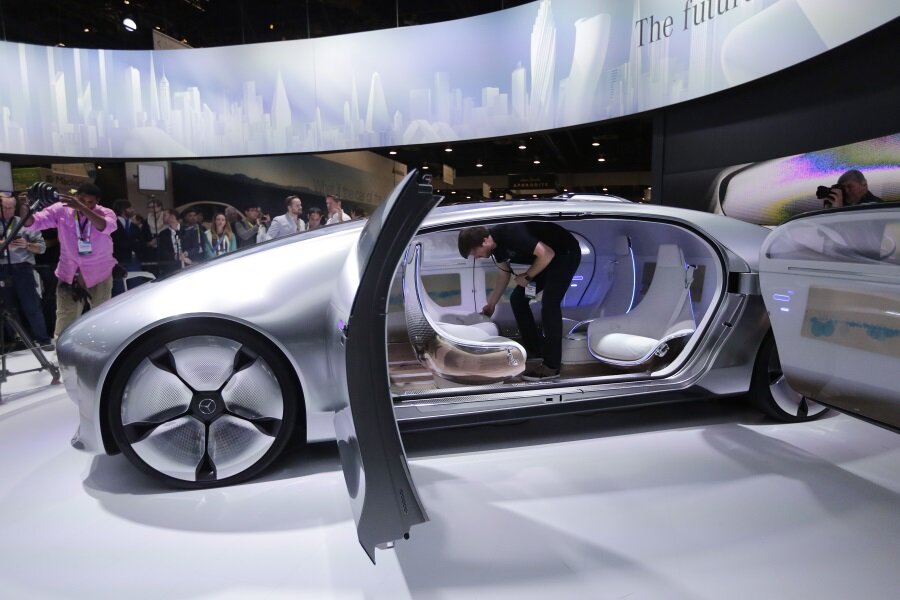CES 2015: Mercedes, Ford, Audi embrace connected, self-driving cars
Loading...
The age of self-driving cars seems perpetually to be just around the corner, but Mercedes-Benz took a big step toward that future on Tuesday when it introduced the F015 Luxury in Motion at this year’s Consumer Electronics Show (CES).
The F015 is a plug-in hybrid that runs on a hydrogen fuel cell and a lithium-ion battery, and uses sensors and 3-D cameras to drive the car without human assistance.
In a nice touch, the four passenger seats can rotate to face each other while the Mercedes is driving itself, then rotate toward the doors for an easy exit once the car reaches its destination.
The F105 isn’t meant for production, but it shows that Mercedes-Benz has the technology to create a fully autonomous vehicle that can drive itself safely on public roads – not in five years, but today.
Mercedes isn’t the only automaker heading in this direction – in Ford’s keynote address on Tuesday, chief technical officer Raj Nair said that the company is testing its own self-driving cars on public roads, too. As software gets smarter and sensors cheaper, he says, partially or fully automated driving will become the norm. Some Ford models already include a self-parking feature that allows the cars to parallel park without driver assistance.
Audi is performing longer-distance tests. After receiving the first California permit to put self-driving cars on public roads last year, the company sent a prototype A7 from San Francisco to Las Vegas (with a human behind the wheel in case something went wrong). The car reached speeds of 70 miles per hour, and in spite of heavy rain, made it to CES without incident, totally under its own direction. Audi also showed off a special smart watch – made by LG – that could start the A7’s engine and even drive the car for short distances.
But the biggest enabler for self-driving cars isn’t the sinking cost of onboard technology – it’s interconnection. By exchanging data about location, speed, and destination with one another, self-driving cars can manage overall traffic patterns far better than humans can, according to automakers. With this data, cars can not only relieve humans from having to watch the road, but also ease congestion by using roadways more efficiently.
Interconnected cars are considered a subset of the “Internet of Things,” the near-future envisioned by many tech companies in which the appliances people use every day talk with one another to automate tasks. But the collection of such data – including potentially sensitive information such as a car’s location – raises concerns about privacy. For its part, Ford promised in its keynote to respect users’ privacy, and not to pursue fully self-driving vehicles until customers are comfortable with the idea. Mercedes and Audi are mum on the subject for now.
Analysts predict that we’ll see self-driving cars in some parts of the US and Europe by 2018, assuming state regulations can be updated to allow them on public roads.






